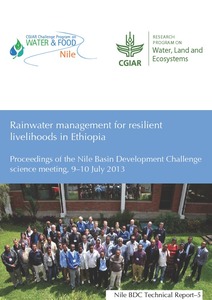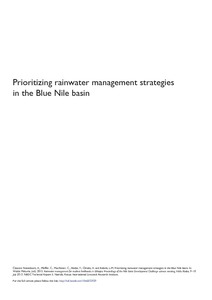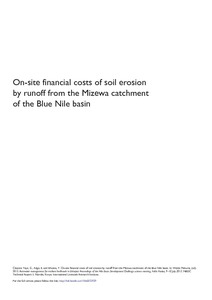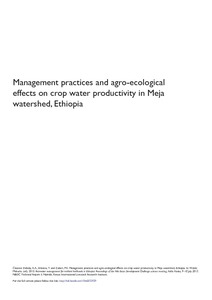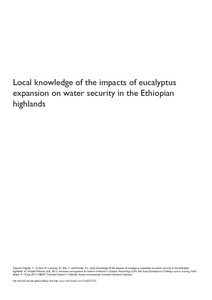Location
Vision, mission and strategy
ILRI's strategy 2013-2022 was approved in December 2012. It emerged from a wide processof consultation and engagement.
ILRI envisions... a world where all people have access to enough food and livelihood options to fulfil their potential.
ILRI’s mission is... to improve food and nutritional security and to reduce poverty in developing countries through research for efficient, safe and sustainable use of livestock—ensuring better lives through livestock.
ILRI’s three strategic objectives are:
- with partners, to develop, test, adapt and promote science-based practices that—being sustainable and scalable—achieve better lives through livestock.
- with partners,to provide compelling scientific evidence in ways that persuade decision-makers—from farms to boardrooms and parliaments—that smarter policies and bigger livestock investments can deliver significant socio-economic, health and environmental dividends to both poor nations and households.
- with partners,to increase capacity among ILRI’s key stakeholders to make better use of livestock science and investments for better lives through livestock.
This is ILRI’s second ten-year strategy. It incorporates a number of changes, many based on learning from the previous strategy (2000–2010, initially produced in 2000 and modified in 2002), an interim strategy (2011–2012) and an assessment of the external and internal environments in which the institute operates.
Members:
Resources
Displaying 376 - 380 of 1152Rainwater management for resilient livelihoods in Ethiopia: Proceedings of the Nile Basin Development Challenge Science Meeting, Addis Ababa, 9–10 July 2013
Prioritizing rainwater management strategies in the Blue Nile basin
On-site financial costs of soil erosion by runoff from the Mizewa catchment of the Blue Nile basin
This study was conducted in Mizewa watershed which is located in Blue Nile Basin (BNB) to estimate on-site financial cost of erosion in terms of yield reduction taking maize as representative crop. For this purpose, discharge measurement and runoff sampling was made during the rainy season of 2011 at the outlet of three sub watersheds within Mizewa catchment; lower Mizewa (MZ0), Upper Mizewa (MZ1) and Gindenewur (GN0).
Management practices and agro-ecological effects on crop water productivity in Meja watershed, Ethiopia
Mixed crop–livestock farming system is a major livelihood strategy in most sub-Sahara African countries. Low water use efficiency and water scarcity characterize the dominant rainfed agricultural production system in the densely populated highlands of Ethiopia. Improving water productivity in the rainfed system is among the ways of overcoming the water scarcity challenge.
Local knowledge of the impacts of eucalyptus expansion on water security in the Ethiopian highlands
Lack of long-term hydrological monitoring makes it difficult to determine impacts of changing land use on the water dynamics for many catchments in Africa. Here we use local ecological knowledge (LEK) to explore the impacts of rapid expansion of eucalyptus agroforestry on water security in the Ethiopian highlands. Local knowledge about the impacts of changes in tree cover was collected from farmers (n = 30), extension staff (n = 2) and timber merchants (n = 2) in five kebeles within the Jeldu woreda. Jeldu has undergone significant land use change over the last forty years.


